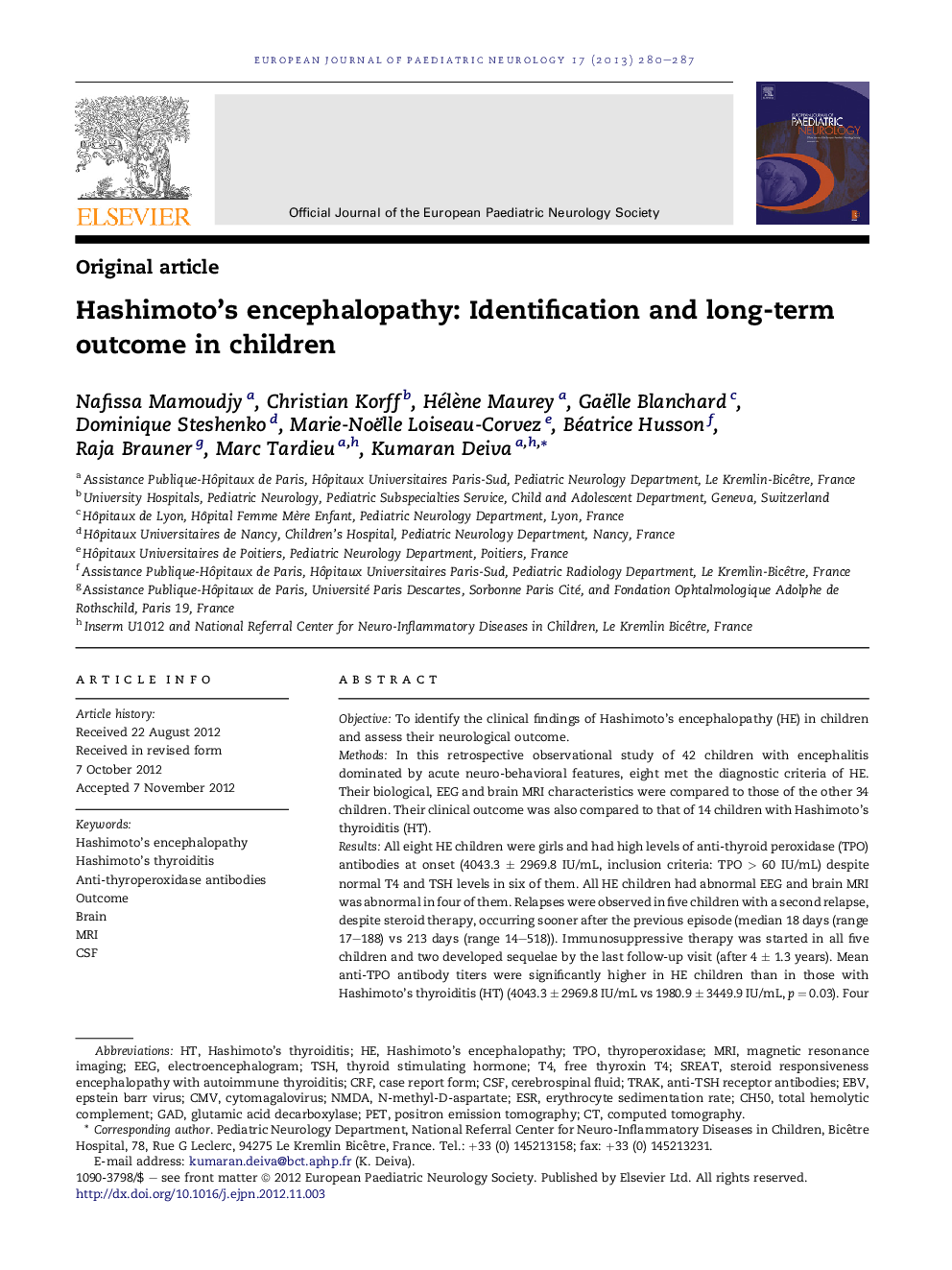| Article ID | Journal | Published Year | Pages | File Type |
|---|---|---|---|---|
| 3054135 | European Journal of Paediatric Neurology | 2013 | 8 Pages |
ObjectiveTo identify the clinical findings of Hashimoto's encephalopathy (HE) in children and assess their neurological outcome.MethodsIn this retrospective observational study of 42 children with encephalitis dominated by acute neuro-behavioral features, eight met the diagnostic criteria of HE. Their biological, EEG and brain MRI characteristics were compared to those of the other 34 children. Their clinical outcome was also compared to that of 14 children with Hashimoto's thyroiditis (HT).ResultsAll eight HE children were girls and had high levels of anti-thyroid peroxidase (TPO) antibodies at onset (4043.3 ± 2969.8 IU/mL, inclusion criteria: TPO > 60 IU/mL) despite normal T4 and TSH levels in six of them. All HE children had abnormal EEG and brain MRI was abnormal in four of them. Relapses were observed in five children with a second relapse, despite steroid therapy, occurring sooner after the previous episode (median 18 days (range 17–188) vs 213 days (range 14–518)). Immunosuppressive therapy was started in all five children and two developed sequelae by the last follow-up visit (after 4 ± 1.3 years). Mean anti-TPO antibody titers were significantly higher in HE children than in those with Hashimoto's thyroiditis (HT) (4043.3 ± 2969.8 IU/mL vs 1980.9 ± 3449.9 IU/mL, p = 0.03). Four HE children subsequently developed hypothyroidism whereas only one HT patient presented encephalitis.ConclusionHE is characterized by suggestive clinical symptoms with high levels of anti-TPO antibodies and, in most cases, normal T4 and TSH titers. Despite steroid treatment, relapses and sequelae are frequent. HE may evolve toward HT, but the reverse appears to be rare.
